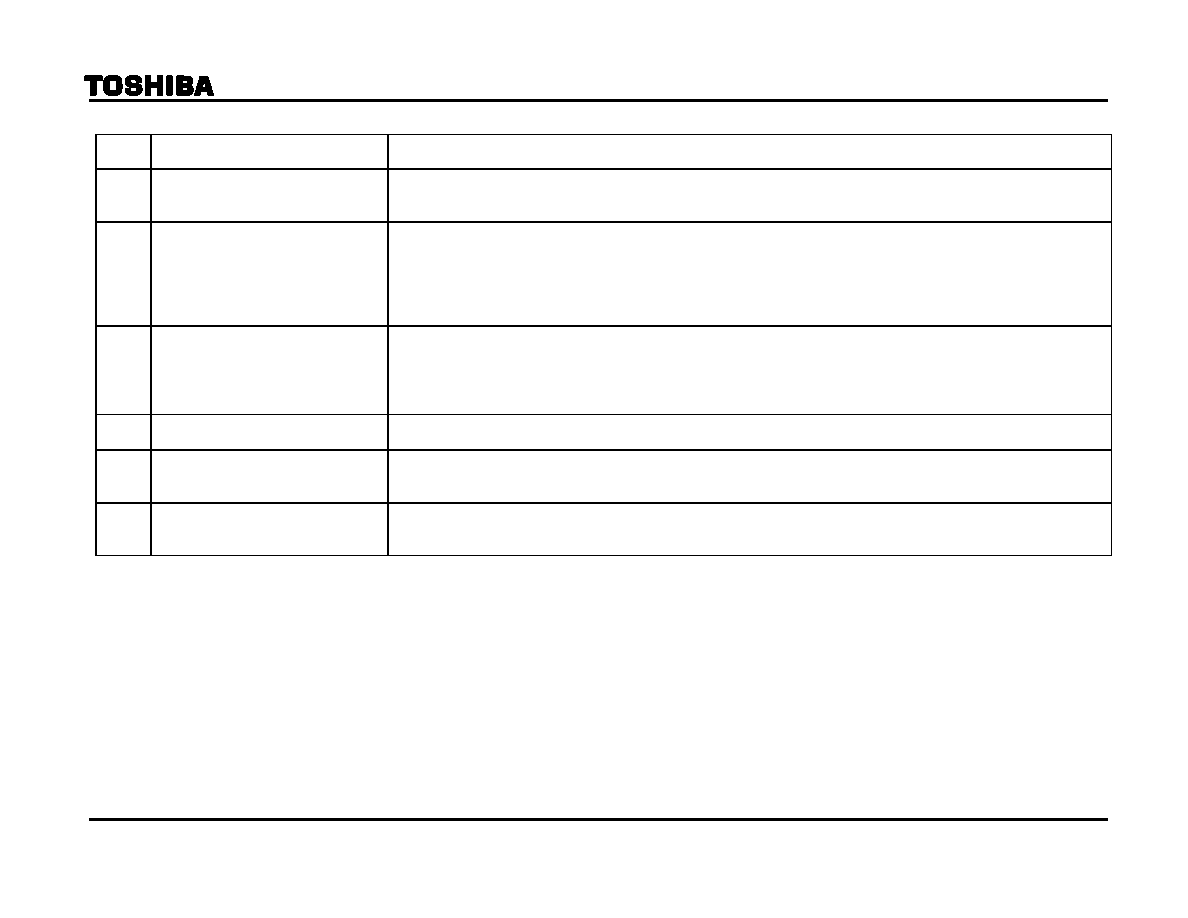- 您現(xiàn)在的位置:買賣IC網(wǎng) > PDF目錄98165 > TB1274BFG SPECIALTY CONSUMER CIRCUIT, PQFP48 PDF資料下載
參數(shù)資料
| 型號: | TB1274BFG |
| 元件分類: | 消費(fèi)家電 |
| 英文描述: | SPECIALTY CONSUMER CIRCUIT, PQFP48 |
| 封裝: | 10 X 14 MM, 0.80 MM PITCH, QFP-48 |
| 文件頁數(shù): | 25/37頁 |
| 文件大小: | 839K |
| 代理商: | TB1274BFG |
第1頁第2頁第3頁第4頁第5頁第6頁第7頁第8頁第9頁第10頁第11頁第12頁第13頁第14頁第15頁第16頁第17頁第18頁第19頁第20頁第21頁第22頁第23頁第24頁當(dāng)前第25頁第26頁第27頁第28頁第29頁第30頁第31頁第32頁第33頁第34頁第35頁第36頁第37頁

TB1274BFG
2005-08-18
31
NOTE
ITEM
MEASURING METHOD
CHROMA SECTION
COMMON TEST CONDITION FOR CHROMA SECTION
①
Set the BUS data as Y1/C1 input is selected via I2C BUS.
②
Set the BUS data as BPF f0 is through, Color system is Europe mode and P/N GW is 2.0μs.
C1
APC pull-in/hold range
①
Input color signal(4.43PAL, 100mVp-p) to pin 48(C1-IN).
②
Increase its frequency until Cb-OUT at pin 22 is discolored(upper hold range), and decrease its frequency
until Cb-OUT is colored(upper pull-in range).
③
In the same way, decrease its frequency until Cb-OUT is discolored(lower hold range), and increase its
frequency until Cb-OUT is colored(lower pull-in range).
④
Calculate the differences between the frequencies and center frequency(4.43MHz).
C2
Killer operation input level
①
Set the BUS data as P/N ID is Normal.
②
Input color signal(3.58NTSC) to pin 48(C1-IN).
③
While attenuating the burst signal, measure the burst amplitude when Cb-OUT(pin 22) is discolored.
④
Set P/N ID Low, and measure killer level as well.
⑤
Input 4.43PAL color signal to pin 48, and measure items in the same way as①to④.
C3
Demodulation
output
residual
carrier
①
Input 3.58NTSC or 4.43NTSC rainbow color bar signal(burst=100mVp-p) to pin 48(C1-IN).
②
Measure sub-carrier leak’s amplitude in Cb signal of pin 22 and Cr signal of pin 23 respectively.
C4
Demodulation
output
residual
higher harmonic
①
Input 3.58NTSC or 4.43NTSC rainbow color bar signal(burst=100mVp-p) to pin 48(C1-IN).
②
Measure higher harmonic’s amplitude (2fc=7.16MHz or 8.86MHz) in Cb signal of pin 22 and Cr signal of
pin 23 respectively.
C5
fsc free-run frequency
①
Input nothing into pin 48(C1-IN).
②
Change setting of Color system according to respective frequency modes.
③
Measure frequency of fsc signal of pin 46 respectively.
相關(guān)PDF資料 |
PDF描述 |
|---|---|
| TB1305FG | SYNC SEPARATOR IC, PQFP48 |
| TB1308FG | SYNC SEPARATOR IC, PQFP48 |
| TB1308FG | SYNC SEPARATOR IC, PQFP48 |
| TB1305FG | SYNC SEPARATOR IC, PQFP48 |
| TB1311AFG | SYNC SEPARATOR IC, PQFP80 |
相關(guān)代理商/技術(shù)參數(shù) |
參數(shù)描述 |
|---|---|
| TB12A | 制造商:Lenline 功能描述: |
| TB12A6C | 制造商:STMicroelectronics 功能描述:TB12A6C - Rail/Tube |
| TB12C6CM | 制造商:STMicroelectronics 功能描述:TB12C6CM - Rail/Tube |
| TB13 | 制造商:Curtis Industries 功能描述: |
| TB-13.000MBD-T | 功能描述:標(biāo)準(zhǔn)時(shí)鐘振蕩器 13.00MHz 3.3V 25ppm -40C to 85C RoHS:否 制造商:AVX 產(chǎn)品:Standard Clock Oscillators 封裝 / 箱體:7 mm x 5 mm 頻率:75 MHz 頻率穩(wěn)定性:50 PPM 電源電壓:2.5 V 負(fù)載電容: 端接類型:SMD/SMT 最小工作溫度:0 C 最大工作溫度:+ 70 C 輸出格式:LVDS 尺寸: 封裝:Reel 系列: |
發(fā)布緊急采購,3分鐘左右您將得到回復(fù)。